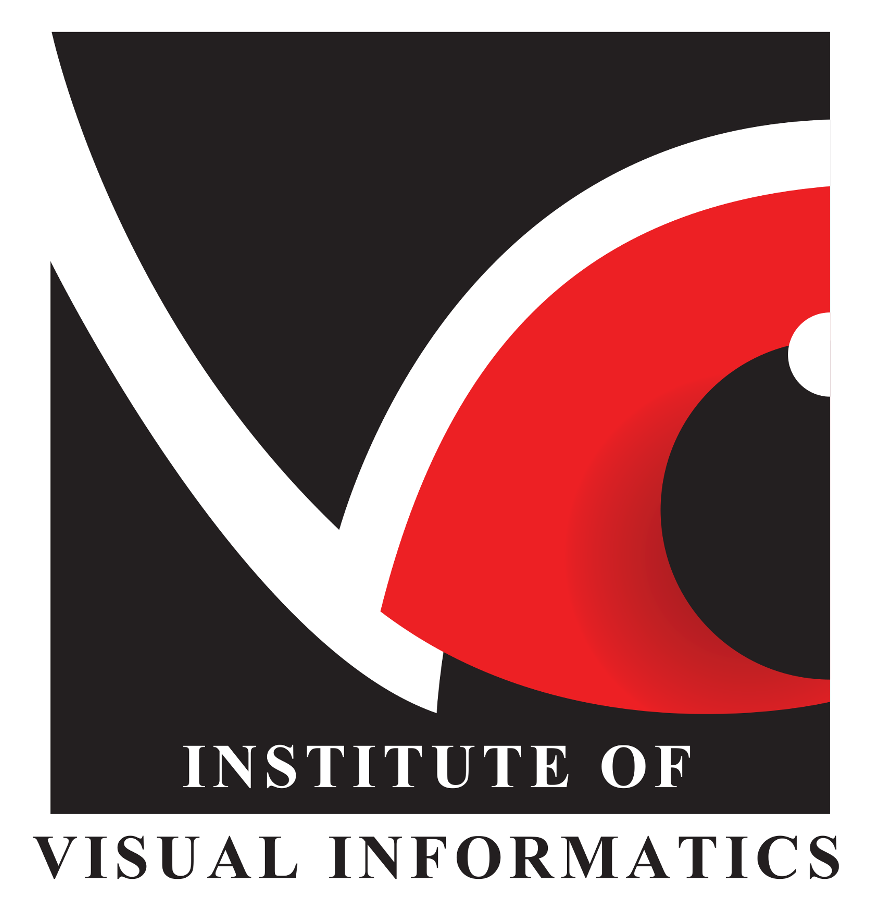Virtual Campus Tour Application through Markerless Augmented Reality Approach
DOI: http://dx.doi.org/10.30630/joiv.5.4.743
Abstract
Keywords
Full Text:
PDFReferences
M. Billinghurst, A. Clark, and G. Lee, “A survey of augmented reality,†Foundations and Trends in Human-Computer Interaction, vol. 8, no. 2-3, pp. 73-272, 2014.
Meliana and C. S. Mon, “A Preliminary Study on Requirement of Smart Tour Guide Application Using Augmented Reality,†in Proc. ICSCA, Kuala Lumpur, Malaysia, 2021, pp. 144-149.
O. H. Jaeyong, S. Park, and O. S. Kwon, “Advanced Navigation Aids System based on Augmented Reality,†e-Navi, vol. 5, pp. 21-31, Dec. 2016.
R. Romli, A. F. Razali, N. H. Ghazali, N. A. Hanin and S. Z. Ibrahim, “Mobile Augmented Reality (AR) Marker-based for Indoor Library Navigation,†IOP Conf. Ser.: Mater. Sci. Eng., vol. 767, 012062, 2020.
J. C. Cheng, K. Chen, and W. Chen, “Comparison of marker-based and marker-less AR: a case study on indoor decoration system,†in Proc. JC3, Heraklion, Greece, 2017, pp. 483-490.
R. Hammady, M. Ma and A. Powell, “User experience of markerless augmented reality applications in cultural heritage museums:‘museumeye’as a case study,†in International Conference on Augmented Reality, Virtual Reality and Computer Graphics, 2018, pp. 349-369.
D. Amin, S. Govilkar, “Comparative Study of Augmented Reality Sdk’s,†IJCSA, vol. 5, no. 1, pp. 11-26, 2015.
C. L. Chiu, H-C. Ho, T. Yu, Y. Liu, and Y. Mo, “Exploring information technology success of Augmented Reality Retail Applications in retail food chain,†Journal of Retailing and Consumer Services, vol. 61, pp. 1-11, July 2021.
A. Harikrishnan, A. S. Abdallah, S.K Ayer, M. E. Asmar, and P. Tang,“Feasibility of augmented reality technology for communication in the construction industry,†Advanced Engineering Informatics, vol. 50, pp. 1-10, Oct. 2021.
K. Klinker, M. Wiesche, and H. Krcmar, “Digital Transformation in Health Care: Augmented Reality for Hands-Free Service Innovation,†Information Systems Frontiers, vol. 22, no. 6, pp. 1419-1431, Dec. 2020.
A. M. F. Yousef, “Augmented reality assisted learning achievement, motivation, and creativity for children of low-grade in primary school,†Journal of Computer Assisted Learning, vol. 37, no. 4, pp. 966-977, Aug. 2021.
M. Fakhour, A. Azough, FZ. Kaghat, and M. Meknassi, “A Cultural Scavenger Hunt Serious Game Based on Audio Augmented Reality,†In: Ezziyyani M. (eds) Advanced Intelligent Systems for Sustainable Development (AI2SD’ 2019). AI2SD 2019. Advances in Intelligent Systems and Computing, vol 1102, pp. 1-8, Springer, Cham, Jan. 2020.
O. Y. B. Keat, N. Wahid, N. Murli, and R. A. Hamid, “Augmented Reality to Induce Enjoyment in Edutainment Mobile Game,†JOIV, vol. 2, no. 3 – 2, 2018.
C. Andri, M. H. Alkawaz, and A. B. Sallow, “Adoption of Mobile Augmented Reality as a Campus Tour Application,†IJET, vol. 7, no. 4.11, pp. 64-69, 2018.
A. Nayyar, B. Mahapatra, D. N. Le, and G. Suseendran, “Virtual Reality (VR) & Augmented Reality (AR) technologies for tourism and hospitality industry,†IJET, vol. 7, no. 2, pp. 156-160, 2018.
H. Alqahtani, and M. Kavakli, “IMAP-CampUS (an intelligent mobile augmented reality program on campus as a ubiquitous system): A theoretical framework to measure user’s behavioural intention,†in ICCAE, Sydney, Australia, 2017, pp. 36-43.
L.S. Pei, S. Cai, and P. F. Shi, “Mobile campus touring system based on AR and GPS: A case study of campus cultural activity,†in Proc. of ICCE, Indonesia, 2013, pp. 518-526.
NUS, “NUS AR Map,†[Online]. Available: http://www.nus.edu.sg/mobileportal/nusarmap/. Accessed on: Nov. 20, 2020.
S. Barjtya, A. Sharma, and U. Rani, “A detailed study of Software Development Life Cycle (SDLC) models,†IJECS, vol. 6, no. 7, pp. 22097-22100, 2017.
D. Steffen, “Taking the Next Step Towards Convergence of Design and HCI: Theories, Principles, Methods,†In: C. Stephanidis et al. (Eds): HCI 2021 CCIS 1419, pp. 67-74, 2021.
Unit Arkitek dan Landskap, Pejabat Pembangunan dan Penyenggaraan, Universiti Tun Hussein Onn Malaysia, 2021.
Wikitude AR SDK, https://www.wikitude.com/
F. D. Davis, “Perceived usefulness, perceived ease of use, and user acceptance of information technology,†MIS Quarterly, vol. 3, no. 10, pp. 319-340, 1989.
H. M. Abu-Dalbouh, “A questionnaire approach based on the technology acceptance model for mobile tracking on patient progress applicaions,†JCS, vol. 9, no. 6, pp. 763-770, 2013.
W. Guest, F. Wild, A.Vovk, P. Lefrere, R. Klemke, M. Fominykh and T. Kuula, “A Technology Acceptance Model for Augmented Reality and Wearable Technologies,†J. Univers. Comput. Sci. , vol. 24, no. 2, pp.192-219, 2018.



